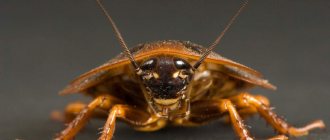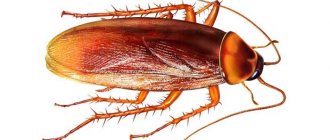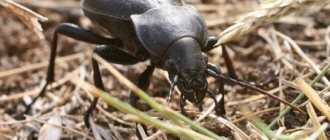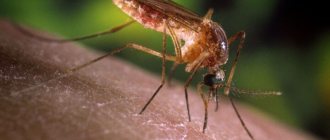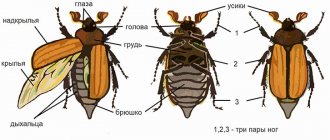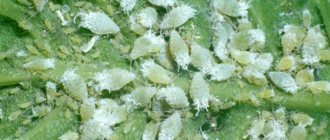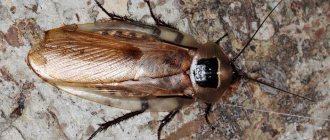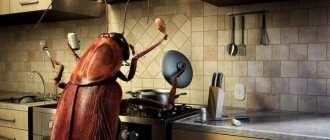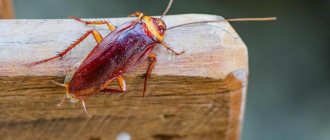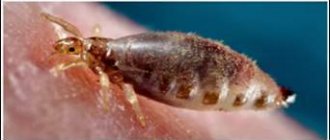A colony of arthropods burrowing in the substrate is a typical picture of modern tropical forests. Insects, cockroaches, are the oldest representatives of neoptera with incomplete metamorphosis. Over the years of evolution, they have not undergone major changes. Arthropods have become true cosmopolitans, spreading across all continents except Antarctica. Cockroaches are hardy and agile, shy and omnivorous. Some species have become synanthropic insects.
Classification
The order Cockroaches (Blattopera) belongs to the class insects, phylum arthropods. Termites are included in a large group of 7,570 species. Cockroaches are members of the superorder Cockroaches (Dictyoptera). It includes new-winged insects with incomplete metamorphosis. 4640 species of cockroaches have been found and studied in the world. There is a constant debate among scientists regarding taxonomy. The authors divide cockroaches into different numbers of families and subfamilies, classify them together and separately with termites.
According to the latest data, 8 families have been identified: Nocticolidae, Corydiidae, Blaberidae, Ectobiidae, Cryptocercidae, Tryonicidae, lamproblattidae, Blattidae. The greatest diversity of species is found in the tropics. Insects found an abundance of food and shelter in warm and humid forests. There are 55 species of cockroaches living in the CIS. Some of them are synanthropic, living next to humans.
Information. Is a cockroach an insect or an animal? In everyday reference, animals are four-legged vertebrates, but in scientific classification they include many organisms. Insects are arthropod invertebrate animals.
Interesting Facts
- In a second, an insect can run 75 cm.
- Cockroaches are very maneuverable - they can change the trajectory of their movement up to 25 times per second.
- The insect can live without a head for 10 days, a month without food and a week without water.
- Cockroaches breathe with their whole body and are able to hold their breath for 40 minutes.
- A person can survive exposure to 500 rads, while a cockroach can withstand 6400 rads.
- During life, the insect releases gases every 15 minutes, and after death it continues to release them for another 18 hours.
- If a cockroach is turned on its back, it will never turn back and will lie there until it dies from thirst or hunger.
- Cockroaches easily move from one country to another and immediately take root in a new place.
The black cockroach is distributed throughout Europe and is found in close proximity to human habitation.
Structure of a cockroach
Despite the species diversity of the order, the body structure of its representatives is largely similar. The morphology of the imago (adult individuals) is typical. Differences appear in size and color.
External structure of a cockroach
The body of insects is flattened and oval in shape. This structure allows you to crawl into narrow cracks and holes. The length of the imago ranges from 9 to 95 mm. The color of the cover is often dark - brown, black, brown. Reddish and coffee colors are less common. Nocturnal lifestyle, secrecy and the need for camouflage do not require the presence of bright colors.
Interesting fact. The largest species is the Madagascar hissing cockroach, its length is up to 100 mm. For comparison, the size of Prussians is 9-10 mm. More popular information will be told in “Interesting facts about cockroaches: what we know about these insects.”
Body parts of a cockroach
Insects consist of three main sections: head, thorax, and abdomen. Dividing the body promotes mobility. Functional significance of each department:
The head is triangular or heart-shaped, movable, covered from above by a pronotal shield. The organs of vision and touch are located on it. Antennae are movable appendages consisting of segments. The type is bristle-like. The functions of the antennae of a cockroach are touch and smell. With the help of appendages, they determine the taste of food, find sexual partners, and communicate between individuals. The mouthparts are directed downwards.
Information. The number of segments in the antennae increases with changing ages of the larvae. They are added after molting.
Thorax - the middle section consists of three segments, divided into tergites and sternites. The upper half rings form the back, the lower half rings form the chest. The largest segment is the pronotum; it can be flat or convex. Elytra and wings are attached to it. Each part of the chest belongs to one pair of limbs.
The abdomen is the largest section and consists of 10 segments. At its end there are paired segmented appendages of the cerci. The abdomen houses the respiratory and digestive systems, and in females the ovipositor. The anal plate is located on the 10th tergite.
Excretory system
The main organs of the excretory system in insects are the Malpighian vessels. These are tube-like structures, the blind ends of which end in the body cavity and are washed by hemolymph, and the basal parts are connected to the intestinal canal, as shown in the photo to the previous section. The vessels capture the end products of metabolism from the hemolymph (mainly protein metabolism, mainly uric acid) and carry them into the intestine, from where they are then excreted with excrement.
The number of Malpighian vessels can be from 1 to 250, and sometimes more. The desert locust has the most of them. (photo)
Features of the structure of cockroaches
Each of the main parts of the body contains organs that provide vital functions for insects.
What kind of eyes does a cockroach have?
The main organ of vision in cockroaches is compound or compound eyes. They are located on the sides of the head. They have different sizes (large in winged forms) and are kidney-shaped. The interocular space is well defined. Additional organs of vision, simple eyes, help assess the intensity of light. They are small and located at the top of the head. How many eyes does a cockroach have? Insects have 2 main eyes and 2 simple ocelli, which have atrophied in some species.
You will learn about the phenomenal endurance of insects in the article “Without food, water and a head: how long do cockroaches live?”
Type of cockroach mouthparts
Insects that eat solid food have developed gnawing type mouthparts. It consists of several parts:
- Upper lip - sensitive hairs on its surface help in studying food.
- The upper jaw (mandibles) consists of a durable chitinous plate with teeth. Used for biting and grinding food.
- The lower jaw (maxilla) is a movable organ consisting of several segments that supports food during grinding.
- The lower lip helps push food into the pharynx; its palp is an organ of touch.
The cockroach's mouthparts have remained unchanged throughout the entire period of its existence. It allows you to absorb plant residues and any organic matter.
Cockroach limbs
Running is the main method of movement for representatives of the cockroach order. The structure of their legs helps them with this. The limbs consist of 5 parts. They are attached to the body with the help of a coxa, which has developed muscles. The longest segments are the thigh and tibia. The flexible foot consists of 5 segments. There are spines on the legs and thighs. How many legs does a cockroach have? Insects have 2 pairs of limbs, each of which is attached to a specific part of the chest.
Information. Some species have a suction cup on the foot, allowing insects to move along vertical surfaces.
Limbs are used for more than just running and jumping. With them, the imago cleans the antennae and body of food debris. The legs are flexible and mobile, they allow you to quickly change the trajectory of movement in case of danger. The average speed of a Prussian is 3-4 km/h.
The structure of the wings of a cockroach
The ancestors of insects had developed wings and the ability to fly. Many modern species have lost it. Appendages appear only in adults. They consist of two pairs. The first is the leathery elytra. They perform a protective function and do not participate in flight. The second pair are membranous wings. The length and development of the appendages depends on the species. In females, the wings are less developed. In a calm state, insects fold them on their backs.
Flying cockroaches are most often found in the tropics, but some species are found in Central Asia and Europe. Among domestic insects, the American cockroach demonstrates the ability to fly. Although Prussians have long wings, they rarely spread them and can glide.
Internal structure of a cockroach
The vital activity of insects is provided by the main systems:
- circulatory;
- nervous;
- digestive;
- excretory
To understand how insects can live for months without food and about a week without a head, we need to study them in more detail.
Circulatory system - blood (hemolymph) flows in the space between the internal organs of the insect. There is only one vessel in the body connected to the heart. Main muscle. The pumping blood consists of 13 chambers, 2 of them are in the chest, the rest in the abdomen. The function of blood is to transport nutrients and remove waste products. The respiratory system distributes oxygen. This is the main reason for the reduction of blood vessels. The blood movement is slow, the insect does not maintain a constant body temperature.
Information. If you deprive a cockroach of its head, the hemolymph quickly sinteres and the body does not bleed.
When depicted schematically, the respiratory system resembles a tree. It consists of a tracheal system that encircles all important organs. Branches extend from the main trachea, gradually decreasing in diameter. The system is connected to the external environment using 10 stigmas, which are called spiracles in cockroaches. Two pairs of stigmas are located on the sides of the chest, the main part is located on the abdomen. Breathing occurs when the department contracts.
The digestive system is an intestine divided into several sections. In the mouth, food is ground and moistened with saliva. Next, it is pushed into the pharynx, then into the crop, where digestion and absorption begin. Food is fed into the stomach in small portions. It is prepared and sent to the midgut. In this section, the digestive secretion is secreted and the main absorption occurs. Excrement comes out through the anus.
The excretory system or Malpighian vessels remove waste products from the body through the hindgut.
What is the body of a cockroach covered with?
The typical cover of arthropods is a chitinous shell. For cockroaches, this is a shell that protects internal organs. It allows the body to maintain its shape and serves as a skeleton. The outer cover prevents the rapid evaporation of moisture. At the base of the limbs, the layer of chitin is thinner to provide mobility to the legs. The hard shell limits the growth of insects. During development, the larvae have to shed it. The tight shell cracks and the insect crawls out of it. At first his body is white and soft. This is a sign of the absence of chitin. After a few hours the cover is restored.
Information. An encounter with molted arthropods gave rise to myths about white cockroaches.
Troop Lice
Represented exclusively by external parasites of mammals. The sucking mouthparts of lice are structured in a unique way, unlike, for example, the sucking mouthparts of bedbugs (Fig. 17).
Rice. 17. Squad Lice
The transformation of lice is incomplete. They don't have wings.
Lice should never be confused with fleas, which is often done due to their similar parasitic lifestyle. In fleas, the transformation is complete - these are completely different insects (Fig. 18).
Rice. 18. Louse and flea
Like other bloodsuckers, lice must somehow prevent blood from clotting in their digestive system.
To do this, substances that prevent blood clotting - anticoagulants - are released into the wound along with saliva.
The limbs of lice are tenacious, strong, and claw-shaped. With their help, they are attached to hair or clothing fibers.
About 250 species of these insects are known. Their body length ranges from 0.4 to 6 mm. Female lice lay eggs on hair or clothing. These eggs are called nits (Fig. 19). In total, a female can lay up to 300 eggs during her life.
Rice. 19. Nits
Lice are carriers of pathogens of various diseases. The most dangerous among them are chain fever and relapsing fever. The habitat of lice is hair-covered areas of the body and human clothing. Prevention of lice means keeping your body and clothes clean. The main measure to eliminate lice is the use of special products that are sold in pharmacies.
Features of reproduction
Cockroaches have male and female species. They attract potential partners with the help of chemical odors - pheromones. Males of some species perform courtship dances during courtship. The fertilized female lays eggs in a special capsule formed in the abdomen. In a special chamber, sticky secretions envelop each egg and form a shell. Females carry it in their abdomen and periodically push it out for ventilation. For embryo development, a high temperature of about 30° is required. A detailed description of ootheca in the article “How many cockroaches hatch from one egg?”
The duration of carrying depends on the species, some shed the ootheca after 7-14 days, others keep it in the abdomen until the larvae are born. The egg cocoon helps increase the survival rate of the offspring. This is the first food of the larvae. The young are born white, with a soft coat. The larvae stay near their mother or burrow into the ground. They go through 3-12 instars before turning into adults. Each is accompanied by molting - shedding a tight shell.
The offspring are called larvae or nymphs. Outwardly, they resemble adults. The differences are:
- small size;
- absence of genitals;
- a small number of antennal segments;
- lacking wings.
Larvae make up the bulk of the colony. They show more caution than adults and burrow into the ground more often. Development takes from several months to 1-2 years. When the temperature drops, the larvae grow poorly.
Fat body
The fat body is the substance located between the organs. Conventionally, it can be classified as an organ of the excretory system (“storage kidneys”), but it not only accumulates metabolites, but also performs many other functions, which also makes it similar to “our” liver and adipose tissue.
The fat body has a color from white to bright orange, and is located in the largest volume in the abdomen. It accumulates reserve nutrients in the form of glycogen or fat, processes of neutralization of poisons (including insecticides) and metabolic products occur in it, and in some insects the fat body contains special cells that form luminescent organs.
Nutrition
In natural conditions, most cockroaches are vegetarians; they eat fallen leaves, fruits, and dead plants. Some species are omnivores, their diet expanded to include the remains and excrement of animals. Domestic insects feed on any food found in the apartment. Preference is given to sweets, bread and pastries, as well as fruits. You will learn about the diet of domestic pests in the material “What do cockroaches eat: what diet should you prepare at home?”
What do they eat?
In the process of evolution, cockroaches have adapted to the most extreme living conditions, and also learned to eat any food, even seemingly inedible at first glance. Among the foods that a cockroach can eat:
- spoiled food;
- plant leaves, fruits, vegetables;
- paper;
- soap;
- fabric, leather, wood.
Even though insects are omnivores, they still have food preferences. So, what do cockroaches love most:
- sugar;
- sweets;
- baking;
- meat and meat products.
Dinner
In case of acute food shortage, cockroaches can attack people, biting off pieces of skin, and also eat dead relatives.
The harmfulness of insects
Synanthropic species living in human homes are a potential health threat. In search of food, they examine sewers, garbage chutes, and rodent holes. Pathogenic bacteria, fungi, and helminth eggs remain on the legs of insects. Dangerous microorganisms are transferred to food, bedding, and furniture. If you do not wash your hands regularly, there is a high risk of contracting dysentery, tuberculosis, diphtheria, and hepatitis.
Chitin particles scattered by the larvae after molting cause severe allergic reactions. People develop chronic rhinitis and asthma. All information about the threat to human health is in the article “What are the dangers of cockroaches: can a small insect cause big problems?”
In addition, pests spoil food, books, and wallpaper. They prefer secluded warm places, so they crawl into electrical appliances. Insects cause short circuits and equipment breakdowns. In the fight against synanthropes, any means are used: freezing premises, glue traps, poisoned baits, insecticides. Treating apartments with special chemicals is an effective way to get rid of insects.
Only a few synanthropic species of cockroaches have received the status of pests of stocks and carriers of infectious diseases. The main part of insects plays a significant role in the world ecosystem. Arthropods are destroyers of plant and animal debris and food for animals, birds and reptiles.
Dangerous roommates
We must not forget that mustachioed animals are capable of bringing pathogenic bacteria, viruses, protozoa, and parasite eggs into the apartment from unsanitary places and delivering them to pieces of food. Neighborhood with these insects is dangerous due to helminth infections, intestinal infections, allergies, and bronchial asthma. There are also known cases of cockroaches biting people.
Therefore, at the first sign of an invasion of these insects, measures should be taken to combat them. Measures must be taken very quickly, as mustachioed animals reproduce even faster. Fortunately, there are now many effective anti-cockroach products on the market.
Well proven:
- powders: FAS and Clean House;
- gels: Dohlox, Global, Forsyth, Combat;
- aerosols: Raid and Raptor.
What they don't eat
These arthropods do not tolerate foods with a strong strong odor. This could be black and red pepper, washing powder, essential oils, fragrant herbs, spices.
Although parasites readily eat vegetables and fruits, they do not like cucumbers. The smell of these vegetables is unpleasant to them, and they are also low in calories. Therefore, cucumbers are sometimes used to repel pests. You can grate the vegetable and let the juice drain. Then moisten the sponge generously and wipe the baseboards and floor around the perimeter of the kitchen, bathroom, and toilet. Until the smell dissipates, parasites will avoid these rooms.
general information
The structure of all beetles, of course, varies, but in general terms it can always be described. Most beetles have a separate head, which most likely contains antennae, eyes and mouthparts. Behind the head is the next part of the body - the chest. It is less mobile relative to the head. The first and second pairs of legs are located on the chest. The last body segment is the abdomen. The last pair of legs is located on it, the ducts of excretory glands and secretions open, with the help of which the beetle can mark the territory or leave a trace for communication with relatives, as well as spiracles.
Both wings are hidden under hard elytra
The entire body of the beetle is covered with a hard chitinous covering, which acts as an exoskeleton. This cover also protects the insides of the beetle from mechanical damage. The hard elytra are also made from the same material, which cover the beetle’s wings in a state of rest and protect them from damage.
Favorite food against barbels
Knowing what cockroaches eat, you can get rid of them by turning their favorite food into a weapon. There are many folk recipes that allow you to make bait and traps using food with the addition of toxic substances. Baits are often made using boric acid or borax. The powder is mixed with eggs, potatoes or other tasty foods that Prussians love and placed around the house. When the poison enters the body, it begins to slowly kill the insect, while the acid is completely safe for humans.
Now that you know what cockroaches eat, it will be easier to prevent them from appearing in your home. To do this you need:
- store products in sealed containers;
- put food out of reach;
- regularly wipe the table and remove food residues from surfaces;
- Take out the trash can as often as possible.
Sweep or vacuum the kitchen and dining room floors to ensure there are no crumbs or leftover food there. Do wet cleaning regularly. At the same time, add chemicals to the water. For example, Mr. Proper, Whiteness, Domestos. Prussians do not like the smell of these products, so they will avoid appearing in places where chemicals are applied.
Will they eat a lot?
How much do cockroaches eat? This question is also of interest to many. They eat little - about 20-50 mg of food per individual. In addition to this, males eat much less than females. This is explained by the fact that the female bears offspring.
Yes, of course, the amount of food for one barbel is small. However, what if there are millions of them? The omnivorous nature of these arthropods is interestingly used in China. In this country there are waste disposal enterprises where the main “workers” are cockroaches. Their army of millions processes tons of waste per day.
